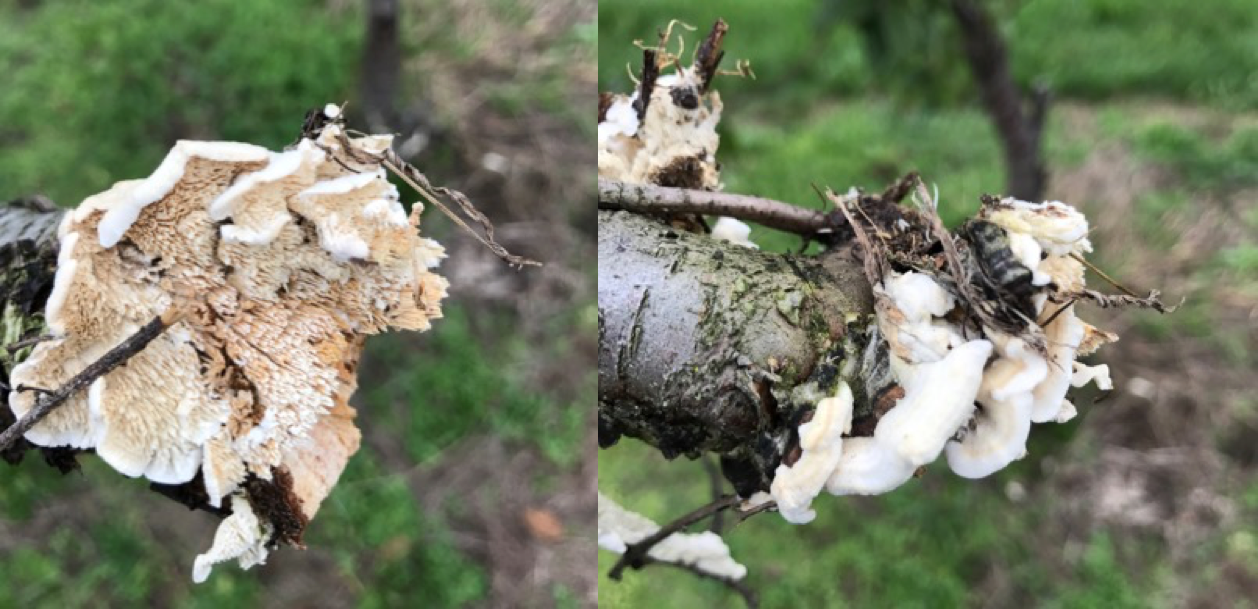Trametes Hirsuta
Saprobic on the deadwood of hardwoods (very rarely reported on conifer wood); annual; causing a white rot; growing in clusters on logs and stumps; summer and fall; widely distributed across North America.

- Ecology: Saprobic on the deadwood of hardwoods (very rarely reported on conifer wood); annual; causing a white rot; growing in clusters on logs and stumps; summer and fall; widely distributed across North America.
- Morphology: Cap: Up to 10 cm across and 6 cm deep; semicircular, irregularly bracket-shaped, or kidney-shaped; often fusing laterally with other caps; very densely hairy; often finely, radially furrowed; with concentric zones of texture; zones with gray, whitish, and brownish shades, but usually not contrasting markedly; margin often brownish to brown or blackish.
- Pore Surface: Whitish, becoming a little brownish, grayish, or yellowish with age; with 3-4 circular to angular pores per mm; tubes with fairly thick walls, to 6 mm deep.
- Flesh: Insubstantial; whitish; tough and corky.
- Chemical Reactions: KOH on flesh negative to dull yellow.
- Spore Print: White.
- Microscopic features: Spores 6-9 x 2-2.5 µ; smooth; cylindric; inamyloid. Cystidia absent. Hyphal system trimitic.

Source:
- Kuo, M. (2010, March). Trametes hirsuta. Retrieved from the MushroomExpert.Com.



 Print
Print Email
Email
